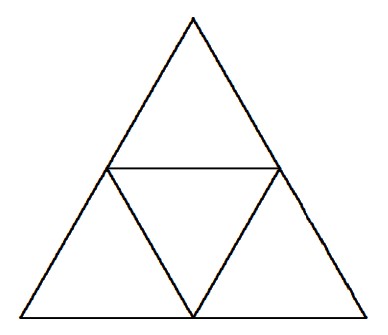Problem:
There is an unlimited supply of congruent equilateral triangles made of colored paper. Each triangle is a solid color with the same color on both sides of the paper. A large equilateral triangle is constructed from four of these paper triangles as shown. Two large triangles are considered distinguishable if it is not possible to place one on the other, using translations, rotations, and/or reflections, so that their corresponding small triangles are of the same color. Given that there are six different colors of triangles from which to choose, how many distinguishable large equilateral triangles can be constructed?

Solution:
Because any permutation of the vertices of a large triangle can be obtained by rotation or reflection, the coloring of the large triangle is determined by which set of three colors is used for the corner triangles and the color that is used for the center triangle. If the three corner triangles are the same color, there are six possible sets of colors for them. If exactly two of the corner triangles are the same color, there are possible sets of colors. If the three corner triangles are different colors, there are possible sets of colors. Therefore there are sets of colors for the corner triangles. Because there are six choices for the color of the center triangle, there are distinguishable triangles.
The problems on this page are the property of the MAA's American Mathematics Competitions